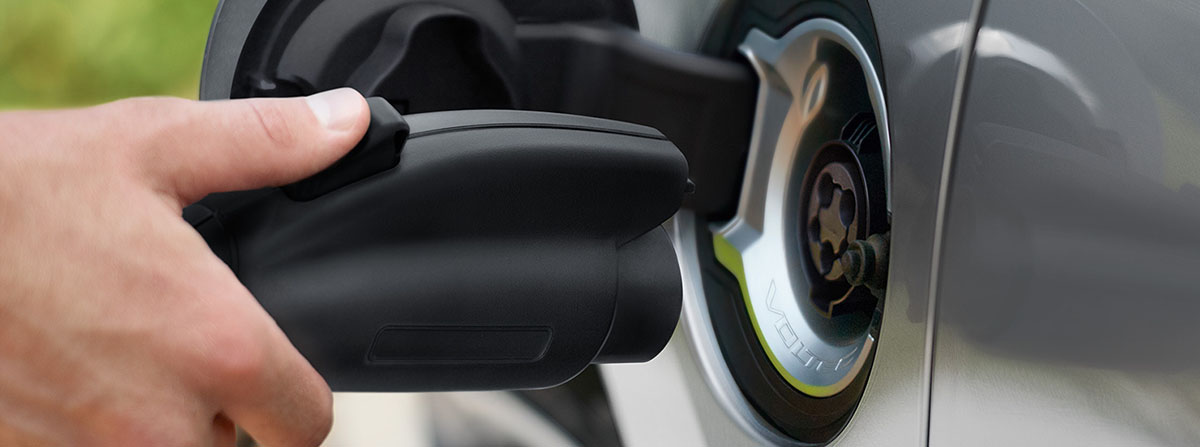
 Your Credit Estimate
Your Credit Estimate
 Your Credit
Your Credit
Your zip code helps us provide you with the most accurate vehicle pricing and vehicle availability.
We estimate your credit score to give you an idea of your monthly payments. To get an accurate payment amount, complete our credit application by clicking the Start Credit Application button below.
start credit application
The U.S. auto industry is going through a pretty large shift over the rest of the decade. By 2030, a lot of automakers have a plan to go all electric and produce more battery-electric vehicles (BEVs), with many releasing plug-in hybrid variants of consumer favorites. Consumers may wonder if BEVs are impractical when surveying the current city infrastructure. There are gasoline stations everywhere…charging stations don’t seem to be as a plenty. Many charging networks are run by independent companies, creating a time-consuming and complicated process that could also affect consumer reaction to the shift to BEVs over the next few years. The sudden urgency to change city infrastructure for charging stations is at a tipping point when BEVs make up more than half of new car sales in the U.S. within the decade.
Automakers are rushing to produce electrified models due to the rising vehicle carbon emissions standards. Because of this, many brands are aiming for carbon neutrality to meet EPA's strictest-ever proposed standards and the current zero-emission goal of the Biden administration. The Biden administration has set a new goal for the streets of the U.S., changing city infrastructure to host 500,000-site charging stations by 2030. A lot of this can be backed up by the $7.5 billion bill passed by the House to change U.S. infrastructure, specifically, to build a network of BEV charging stations, but this is currently becoming the core issue that comes up in discussion. Who do we hire to build this network? At the moment, the U.S. has 62 networks run by charging companies, utilities, automakers and retail chains that have their hands in the BEV charging industry.
"The market needs to be more streamlined to ensure a seamless EV charging experience, but we just don't know which model works best yet," - Amaiya Khardenavis, EV charging infrastructure analyst at Wood Mackenzie
That’s the real question, isn’t it? Which model of BEV charging works best? According to J.D. Power, BEV chargers are currently unreliable, with 1-out-of-5 attempts working as intended. Long-distance travelling relies on both Level 2 and DC fast chargers to restore power to 80-percent in a short amount of time, but charging satisfaction fell to a low in the third quarter of 2022 due to multiple failures. When it comes to building the new network, operators, utilities, automakers, retailers and oil companies will be pulling the reigns on how to go about the new business model.
Automakers have surely shown who they trust when it comes to keeping BEV models charged. Kia and Electrify America have held two promotions for electrified vehicles, previously providing Kia EV6 buyers with 1,000 kilowatt-hours (kWh) of complimentary EV charging/energy. Jeep has also worked with Electrify America and has plans to install Jeep 4xe charging stations this year at three of the most popular and iconic trails that represent the Volkswagen, General Motors, and even Mercedes-Benz are trying to get in on the ground floor, investing billions of dollars to build 10,000 fast-charging stations across North America, Europe, and China, also by 2030.
Under the National Electric Vehicle Infrastructure Formula Program, it’s not just carbon emission standards that are becoming stricter. To get federal funding, a charging port must be functional 97-percent of the time to qualify. Interestingly enough, 85- percent of regular EV charging is done at home, according to J.D. Power. They are clearly reliable, most likely running off of the same power grid the home is connected to. That’s where we’re basically heading. Building charging stations where the land hasn’t been designed to provide electric energy, similar to how land is designed for filling stations, storing fuel underground, we need to take the home charging station model and make it smaller, compact, and easily reproducible on a large scale.
We just solved the problem, guys. What do you think about this emerging market to basically rebuild society to make BEVs and BEV charging more practical? Join the discussion on NowCar social media.